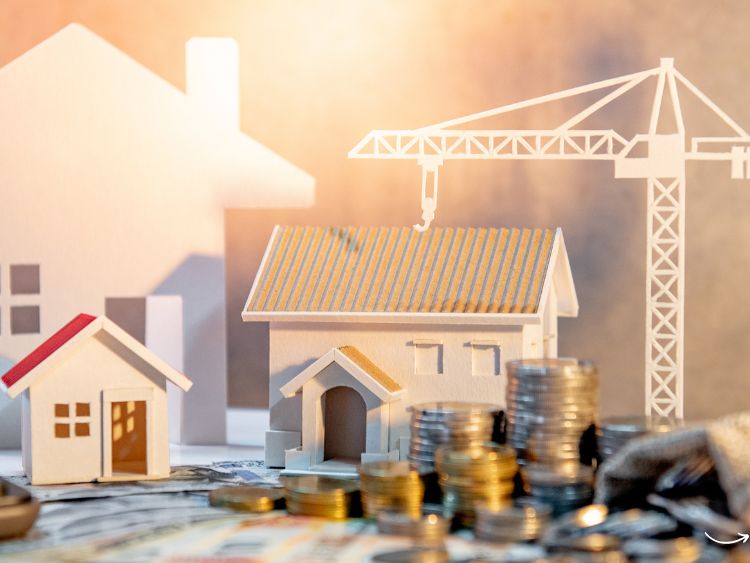Are you dreaming of building your own home? If so, you’re likely considering a construction loan. But wait a minute—what about new construction loan rates? Understanding these rates is crucial for anyone looking to finance their dream home. In this comprehensive guide, we’ll break down everything you need to know about new construction loan rates. We’ll cover the basics, the factors influencing these rates, and tips to secure the best deal. So, let’s dive in!
What Are New Construction Loan Rates?
New construction loan rates refer to the interest rates applied to loans specifically designed for financing the construction of a new home. Unlike traditional mortgage loans, construction loans are short-term and typically have higher interest rates. This is because they carry more risk for lenders. Once the construction is complete, these loans can often be converted into a permanent mortgage.
Types of Construction Loans
There are several types of construction loans, each with its own set of rates and terms:
- Construction-to-Permanent Loans: These loans start as a short-term construction loan and convert to a permanent mortgage once the home is built.
- Stand-Alone Construction Loans: These require two separate closings—one for the construction loan and another for the mortgage.
- Renovation Loans: Designed for major home renovations rather than new builds.
Factors Influencing New Construction Loan Rates
Several factors can affect the rates on construction loans. Let’s explore these key influencers:
Credit Score
Just like with any other loan, your credit score plays a significant role in determining the interest rate. Higher credit scores typically result in lower rates because they indicate a lower risk for lenders.
Down Payment
The amount you put down upfront can also impact your loan rates. Larger down payments can lead to lower interest rates because they reduce the lender’s risk.
Loan Term
Construction loans usually have short terms, often ranging from six months to a year. Shorter loan terms generally come with lower interest rates compared to longer ones.
Market Conditions
Current market conditions, including the overall economy and the housing market, can influence new construction loan rates. When the economy is strong, rates tend to be higher.
Lender Policies
Different lenders have different policies, which can affect the rates they offer. Shopping around and comparing rates from multiple lenders is crucial.
How to Secure the Best New Construction Loan Rates
Want to snag the best rates possible? Here are some tips to help you out:
Improve Your Credit Score
A higher credit score can significantly lower your interest rate. Pay off debts, make timely payments, and avoid opening new credit accounts before applying for a loan.
Save for a Larger Down Payment
The more you can put down, the better your rates will be. Aim for at least 20% of the total construction cost.
Shop Around
Don’t settle for the first offer you receive. Compare rates from different lenders to find the best deal. Use online comparison tools to make this process easier.
Consider a Shorter Loan Term
If you can manage a shorter repayment period, you might benefit from lower interest rates. Just ensure you can handle the higher monthly payments.
Lock in Your Rate
If you find a favorable rate, consider locking it in. This can protect you from rate increases while your home is being built.
The Application Process for New Construction Loans
Applying for a construction loan can be more complex than a traditional mortgage. Here’s a step-by-step guide to help you through the process:
Pre-Approval
Start by getting pre-approved. This will give you an idea of how much you can borrow and what your interest rate might be.
Choose Your Contractor
Lenders often require that you choose a licensed and insured contractor. They’ll need detailed plans and a budget for the construction project.
Submit Your Application
Once you have all the necessary documents, submit your loan application. This will include your financial information, the construction plans, and the contractor’s details.
Loan Approval and Disbursement
If approved, the lender will disburse the funds in stages, known as “draws.” These are tied to milestones in the construction process, such as the foundation being laid or the roof being completed.
FAQs About New Construction Loan Rates
What is the average interest rate for new construction loans?
The average rate can vary based on factors like credit score, down payment, and market conditions. As of now, rates typically range from 4% to 6%.
Are construction loan rates higher than mortgage rates?
Yes, construction loan rates are usually higher due to the increased risk to lenders. Once the construction is complete, you can often refinance to a lower mortgage rate.
Can I lock in a construction loan rate?
Yes, many lenders offer rate lock options. This can protect you from rate increases during the construction period.
Do I need a large down payment for a construction loan?
While requirements vary by lender, a larger down payment can help you secure a better rate. Typically, you should aim for at least 20%.
How long does the approval process take?
The approval process for construction loans can take longer than traditional mortgages due to the additional paperwork and verification needed.
Summary
Understanding new construction loan rates is crucial for anyone looking to build a new home. These rates are influenced by several factors, including your credit score, down payment, loan term, market conditions, and lender policies. By improving your credit score, saving for a larger down payment, shopping around, considering a shorter loan term, and locking in your rate, you can secure the best possible rate. The application process can be complex, but with the right preparation and understanding, you can navigate it successfully.
Authoritative Links for Further Reading
- www.federalreserve.gov
- www.consumerfinance.gov
- www.nerdwallet.com
- www.bankrate.com
- www.investopedia.com
There you have it! A comprehensive guide to new construction loan rates. By following these tips and understanding the key factors, you’ll be well on your way to securing the best loan for your dream home.





